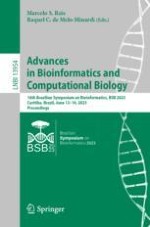This book constitutes the proceedings of the 16th Brazilian Symposium on Bioinformatics on Advances in Bioinformatics and Computational Biology, BSB 2023, which took place in Curitiba, Brazil, in June 2023.
The 11 full papers and 3 short papers presented in this volume were carefully reviewed and selected from 24 submissions. The papers focus on bioinformatics, computational biology, Biological Databases, Biological Networks, Cheminformatics, Evolutionary Genomics, Computational Proteomics, Systems Biology, Drug Design, Genomics, Machine Learning applications in Bioinformatics, Metagenomics, Molecular Docking and Modeling, Molecular Evolution and Phylogenetics, Protein Structure and Modeling, Proteomics, Transcriptomics, Single-Cell Analysis, Workflows in Bioinformatics.
